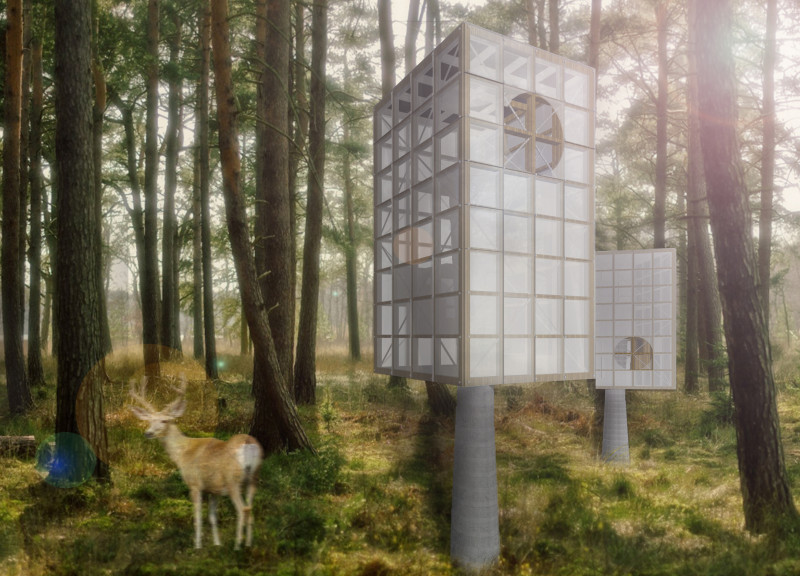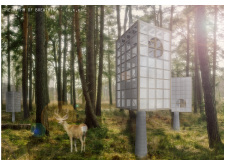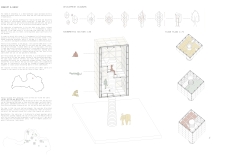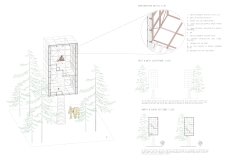5 key facts about this project
The Rhythm of Breathing is located in the peaceful forests of Ozolini farm in Riga, Latvia. This cabin design focuses on meditation and self-reflection. It aims to create a space where individuals can find mental clarity and tranquility. The overall concept is to encourage engagement with nature while supporting mindful practices.
Concept and Functionality
The main idea of the design is centered on meditation as a way to achieve self-awareness. It uses the square breathing technique to organize the space, allowing individuals to align their breathing with the environment. By breaking the meditation experience into segments, the design enhances the ability to connect with one's inner thoughts and feelings.
Spatial Composition
At the center of the cabin is a concrete core that serves as the meditation platform. This key feature symbolizes the heart of the user's journey toward contemplation. Surrounding the core is a timber structure that creates inviting living spaces that extend outward. The combination of the sturdy concrete and warm timber allows for an engaging relationship between the occupant and the surroundings, fostering an environment suitable for reflection.
Natural Light and Ventilation
Natural light plays an important role in the design. The roof has openings that let sunlight stream into the meditation area, creating a gentle halo effect. This thoughtful use of light adds to the calming atmosphere, making it ideal for mindfulness practices. Additionally, the design employs the stack effect to ensure proper ventilation. Warm air rises and escapes, allowing for fresh air to circulate while still maintaining a connection to the outside.
Sustainable Material Use
Sustainability is key in the choice of materials, with 3D printed concrete being a notable feature. The concrete is made from 100% recycled materials, addressing the growing need for environmentally friendly design. This approach reduces waste and supports the idea of functionality within the space. The careful geometry of the cabin is designed to have minimal impact on the environment, allowing it to blend into the natural landscape.
The design draws together structure and light, inviting users to immerse themselves in an enriching experience of mindfulness. It creates a setting that encourages deep reflection and connection with nature, illustrating the potential of thoughtful architectural practice.





















































